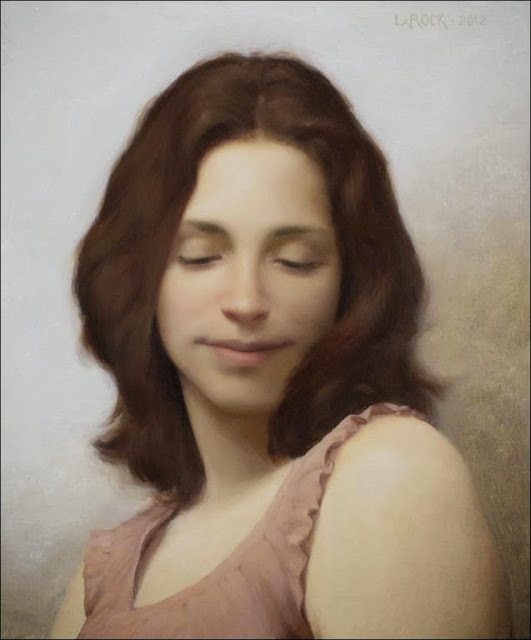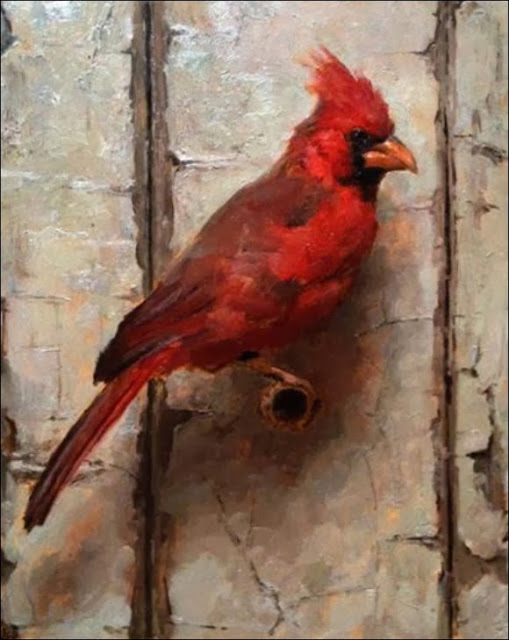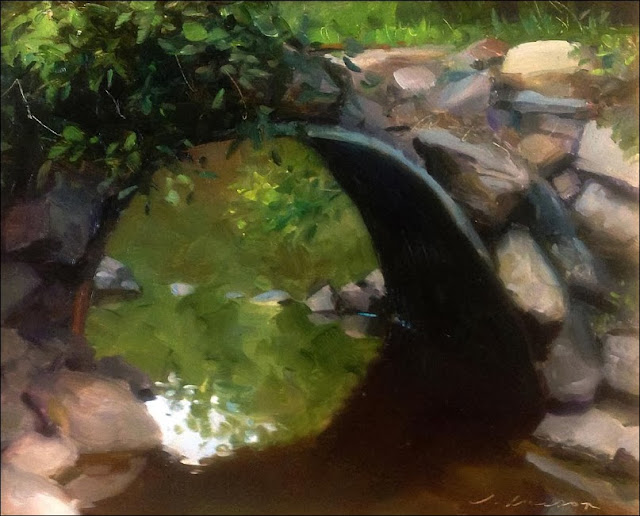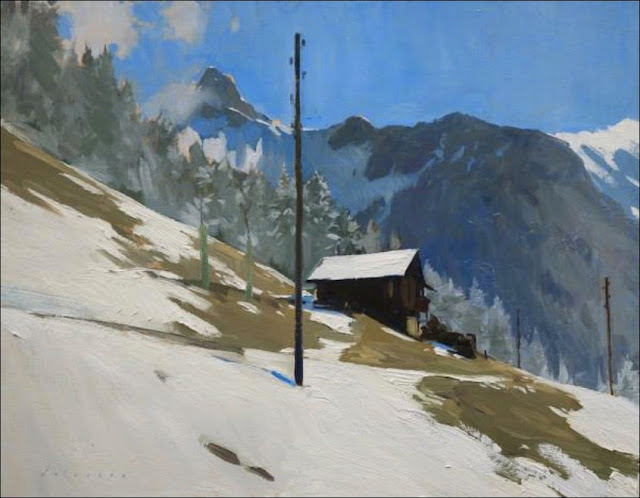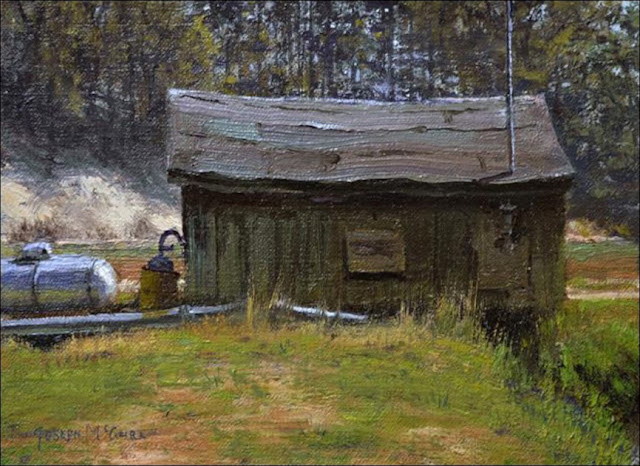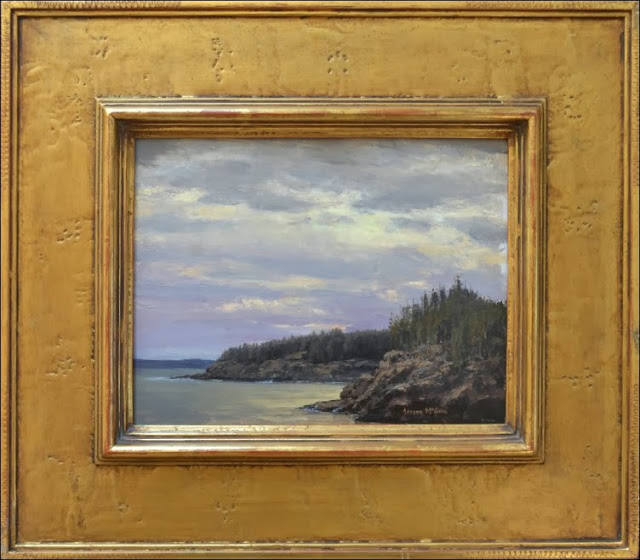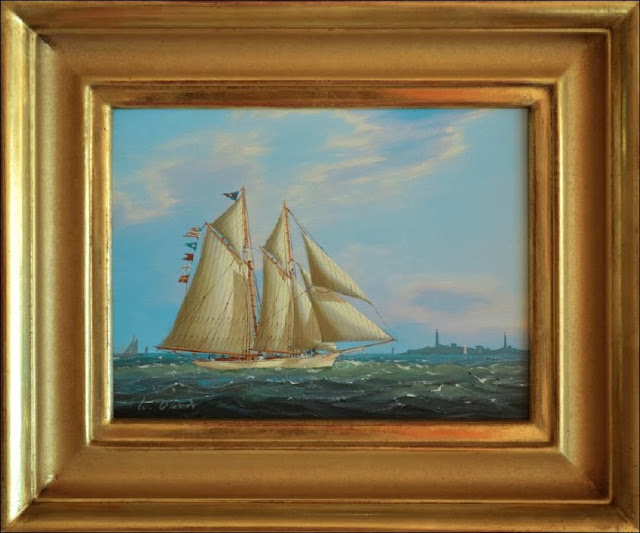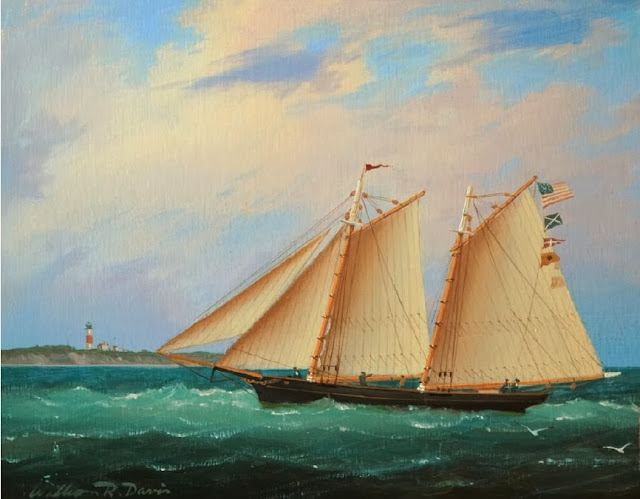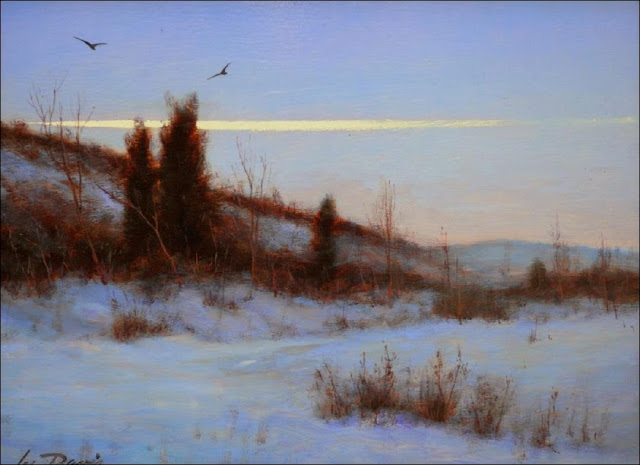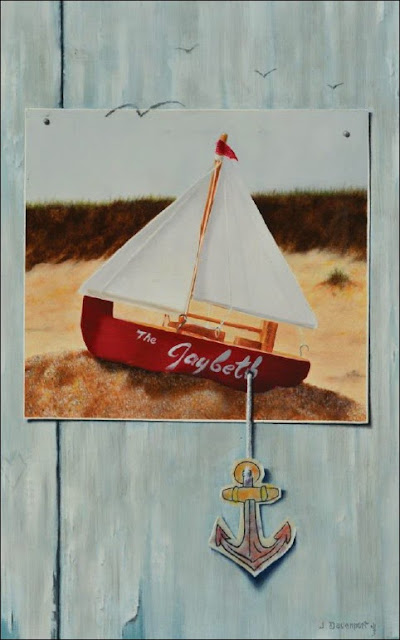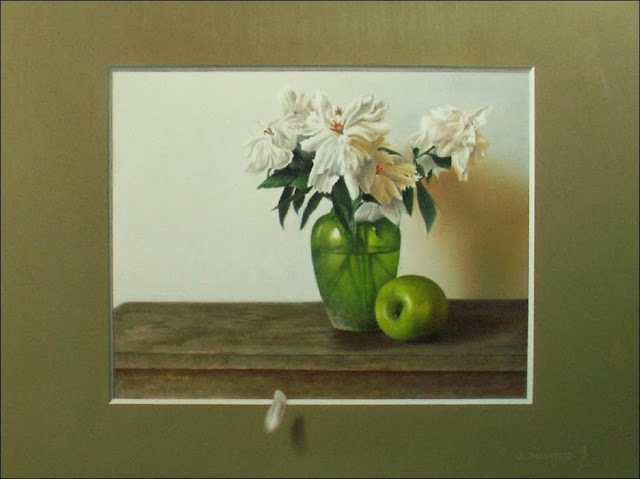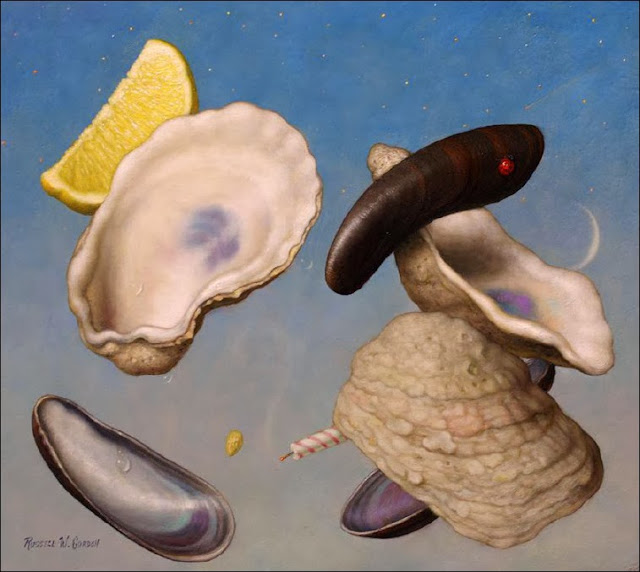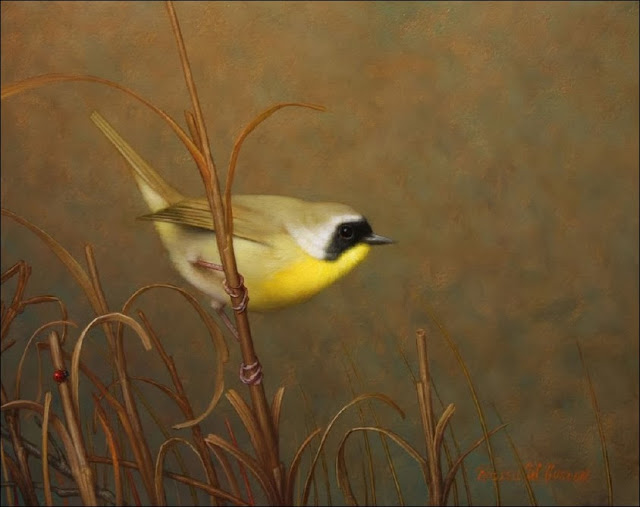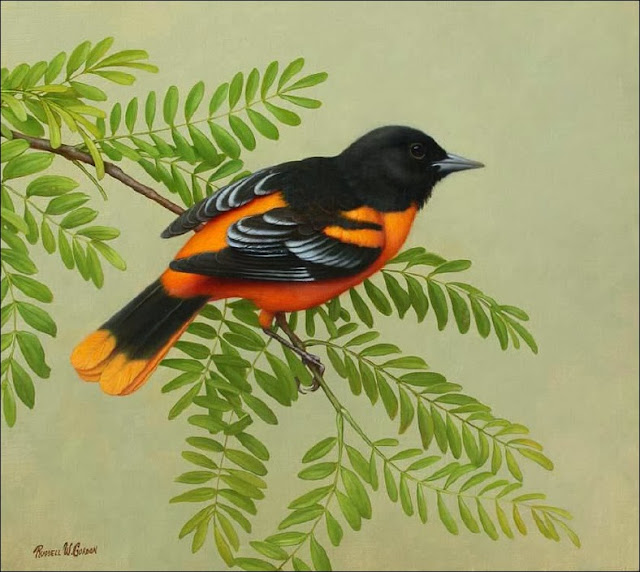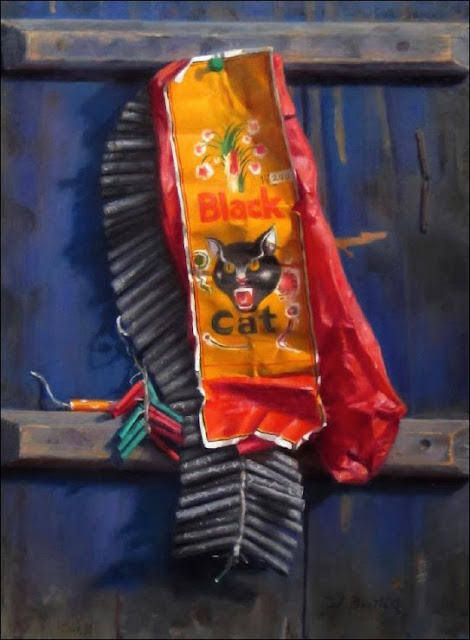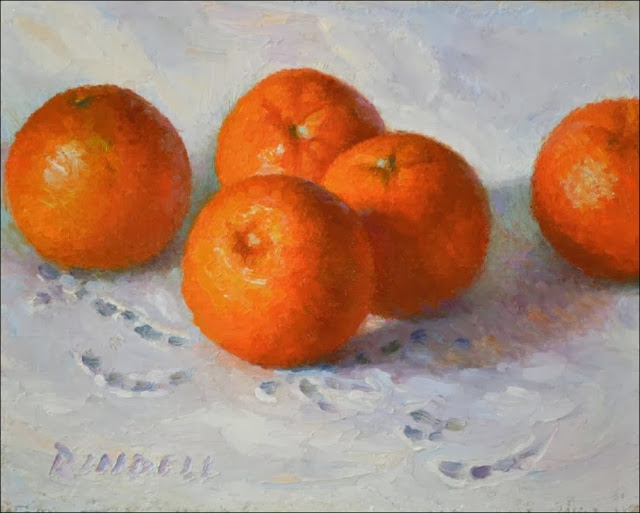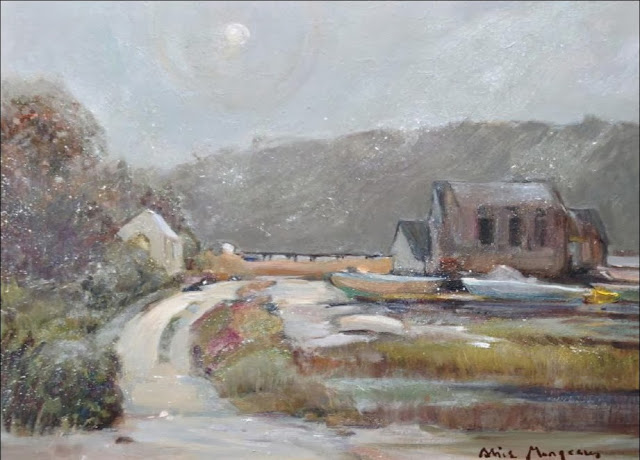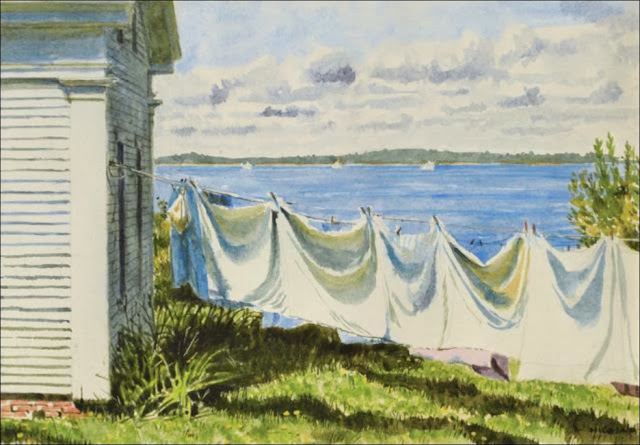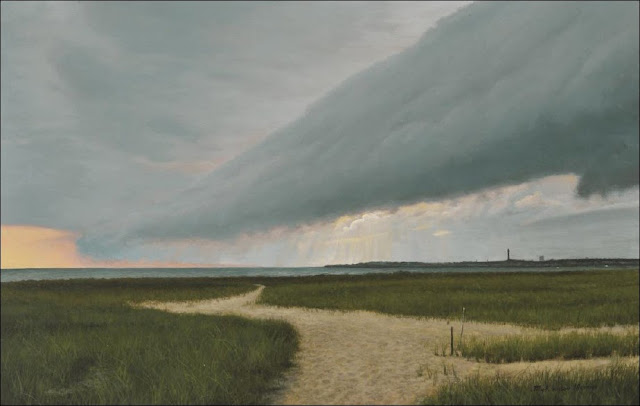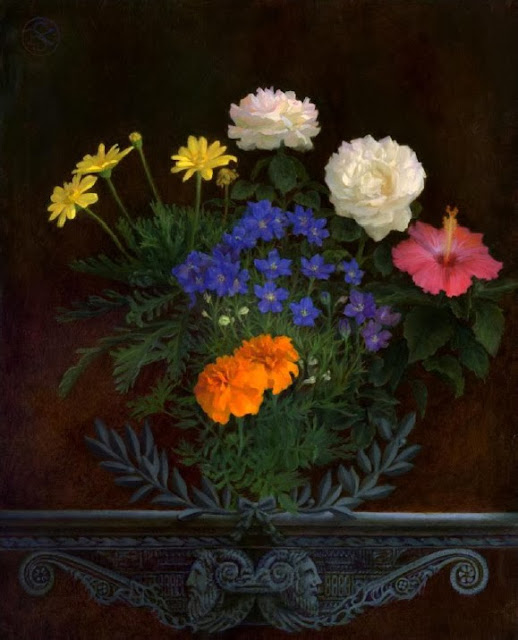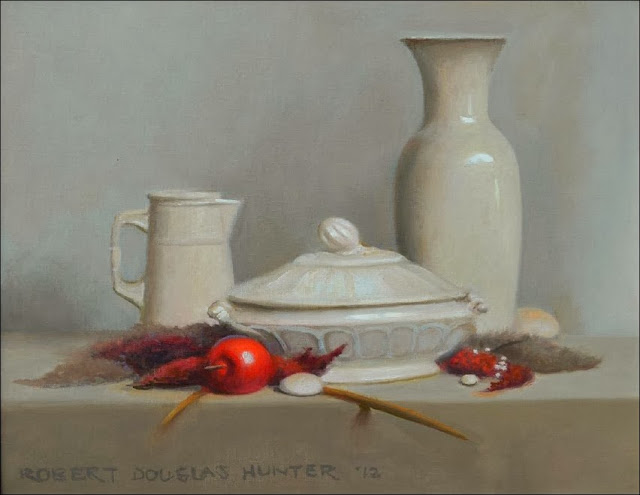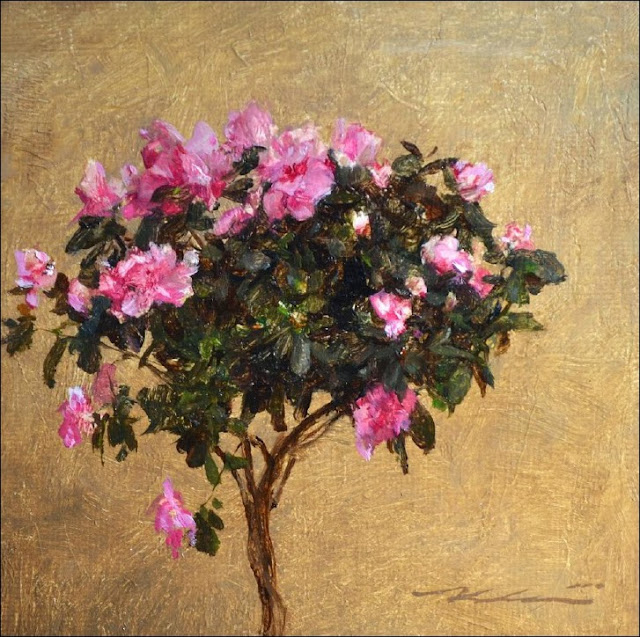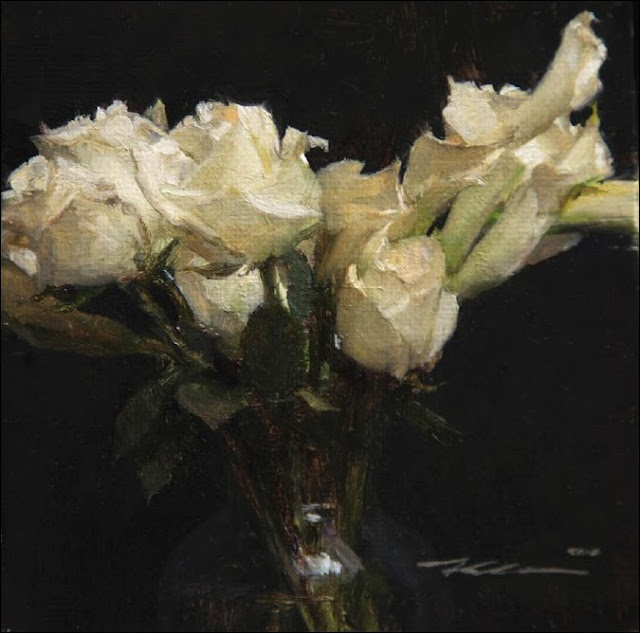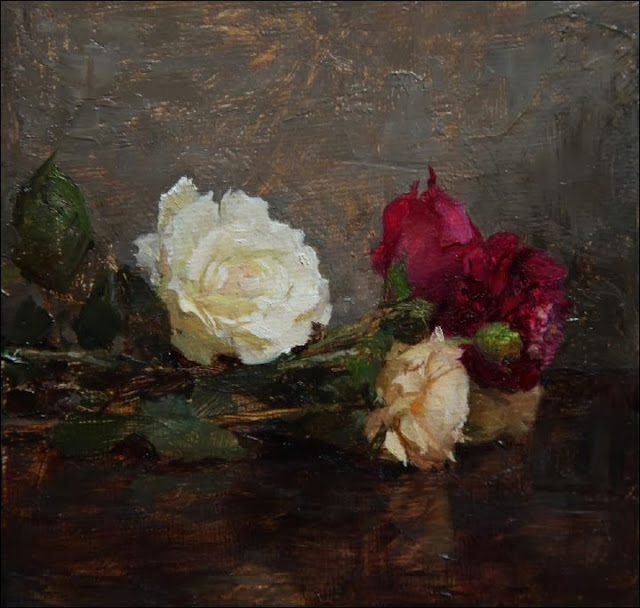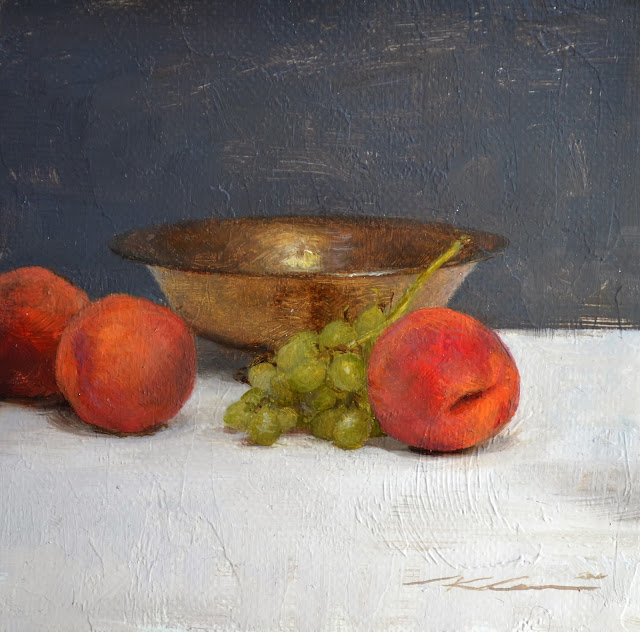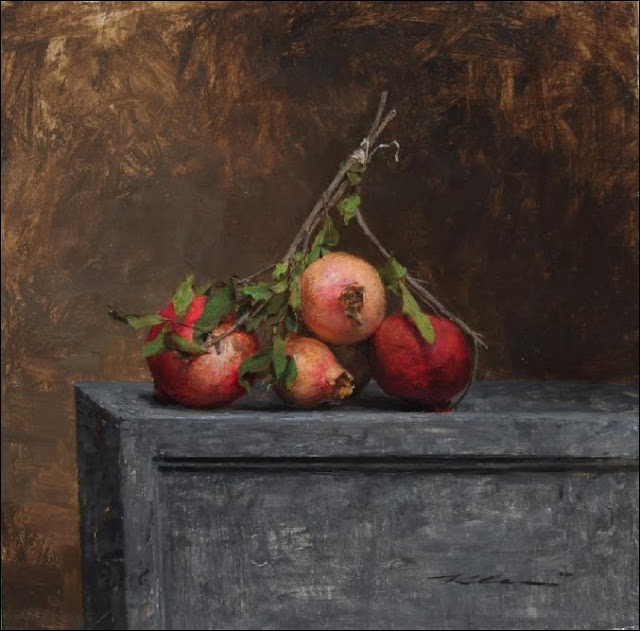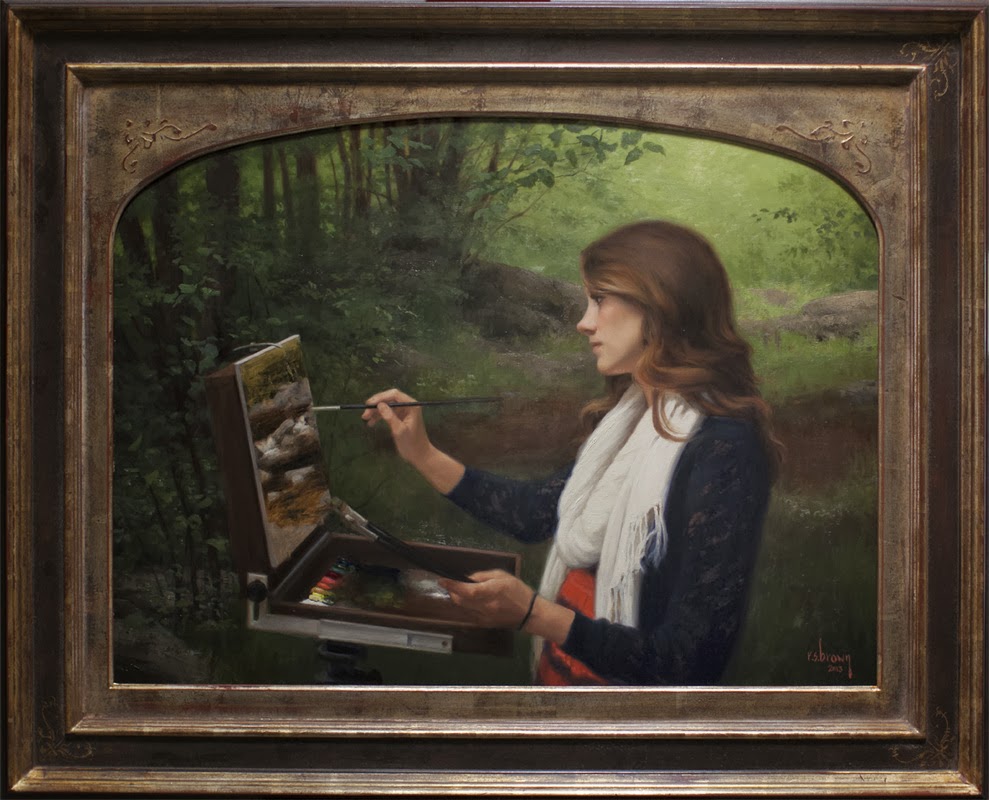![]() |
| "After the money had been collected from all the nouveaux the entire atelier of over sixty students, dressed in working blouses and old coats, formed a line, and with deafening shouts of 'À bore! à bore!' placed the nouveaux in front to carry the class banner, and thus marched out into the Rue Bonaparte to the Café des Deux Magots, singing songs fit only for the studio."¹ |
In the ateliers of 19th century, Bohemian-age Paris, art students were fond - perhaps too fond - of carrying out practical jokes. These blagues d'atelier, or studio pranks, were often focussed on the first-year students (the nouveaux) and occasionally, on the unsuspecting tourist, and generally focussed on either humiliating the subject, or divesting that person of funds so that the pranksters could scurry off to the local café for drinks (presumably, they were toasting to their victim's good health in the process!). The tamer jokes ranged anywhere from classroom initiations, like forced singing or nude paintbrush dueling, to tricks on the public, like offering paid tours of l'école des Beaux-Arts or staging a screaming fit in a shop in order to procure lower prices. Frequently, however, many of these pranks became vicious and cruel, and often a nouveau or rapin² was placed in harm's way for the sake of studio camaraderie, some even to the point where the authorities were forced to step in and close an atelier due to these dangerous activities.³
![]() |
| "No sooner had the model got down from the table than we were immediately surrounded, and any ideas we may have had of sneaking quietly out into the corridor, there, if possible, o remain unnoticed, were completely frustrated. It was decreed that we were to fight duels with paint, which was a very favourite method of initiating new-comers, and most popular among the spectators if not so much relished by the principals concerned. The idea of being copiously besmeared with either prussian blue or vermilion, which were the colours usually served out to the combatants, did not appeal to me a little bit, so I determined, if possible, to avoid such a result. When we five were ordered to remove our clothing and make ready for the fray, I managed, by a little cunning, to take as long as possible."⁴ |
![]() |
"The Hungarian and one of the French nouveaux were next seized and stripped. Then they were ordered to fight a duel, in this fashion: they were made to mount two stools about four feet apart. The Hungarian was handed a long paint-brush dripping with Prussian blue, and the Frenchman a similar brush soaked with crimson lake. Then the battle began. Each hesitated to splash the other at first, but as they warmed to their work under the shouting of the committee they went in with a will."⁵ |
Years later, when Modernism held the reins of the art world, and state-run art schools and the atelier system in general were greatly weakened, blagues d'atelier began to take on a different form, and a different target. Former students of the academies, unimpressed by the skills of the Modern artists, chose to prank Modern Art competitions by submitting parodies for judgement and display. These actions were much less jokes than a political commentary on the new art-establishment.
![]() |
"One of my friends very nearly hurt himself seriously, nay, mortally. He had to jump from a considerable height, out of a loft, from which the ladder had been carefully removed, after the floor beneath had been piled with studio stools, turned legs upward."⁶ ~ Meissonier |
In America, impressionist Richard Miller, a loudly vocal opponent of Modernism, presented a work to the Modernist section of the 1926 Provincetown Art Association's annual, which was just such of these hoaxes. The painting, Hence the Pyramids⁷, was a cubist farce that Miller unkindly attributed to Ad Wolgast, a famed, ferocious and relentless boxer who had been declared mentally incompetent and institutionalized seven years earlier. It was hung in the show to the amusement of Miller and his colleagues, but to the annoyance of many in Provincetown's Modernist faction.⁸
![]() |
| "Having by arrangement contrived to get the proposed victim into some compromising situation such as might be supposed, if discovered, to bring him into trouble with the authorities, the bogus inspector, who was ready outside waiting for his cue, would, at a given signal, make a sudden and solemn entry into the studio. Fully dressed for the part, in all the majesty of top hat and black coat, he at once apparently detected the alleged offender and lectured him severely. We others assumed a deferential and abject manner much more marked than that ever accorded to (the genuine inspector), while the unhappy novice attempted in vain to clear himself from the accusation of a purely imaginary crime. Needless to say, no explanations were accepted, and, after asking a few questions of witnesses, which were naturally answered in a way most prejudicial to the accused, the inspector gravely pronounced sentence of expulsion upon him."⁹ |
But perhaps a better-known story of one of these fleecings comes from the Montmartre section of Paris, early in the 20th century. There, in the Lapin Agile, a small restaurant and cabaret frequented by such young artists as André Derain, Maurice Utrillo, Amedeo Modigliani, and Pablo Picasso, a plan was hatched to dupe the Modern art-establishment. Café patron Roland Dorgelès, a writer and outspoken critic of new art forms, was the genius of the scheme; his accomplice who carried out the actual painting was Aliboron, nicknamed "Lolo,"the manager's popular donkey. After setting a canvas outside the front door of the Lapin Agile and tying a paintbrush to Lolo's tail, Dorgelès dangled various vegetables in front of the donkey's nose, causing the animal to swish his tail with excitement.¹⁰ The resulting painting was titled Sunset Over the Adriatic, and was attributed to a fictitious Genoese painter called Joachim Raphaël Boronali ("Boronali" being in fact an anagram of Aliboron). When exhibited at the 1910 Salon des Indépendants, the painting earned high praise, and was eventually sold for 400 francs.¹¹ Only afterwards did Dorgelès reveal his fumisterie (prank), when he relayed the true story in the satirical magazine Fantasio, and lambasted the Salon des Indépendants for indiscriminatingly allowing so much work into their shows, that a painting by a donkey could be hung beside those of honest artists.¹² Lolo and the painting became quite famous, and the farce was met with much hilarity, but as widespread as the news of the hoax was, its message had very little effect on the art world.
![]() |
Joachim Raphaël Boronali
Sunset Over the Adriatic |
![]() |
| Period photograph of Lolo painting Sunset Over the Adriatic |
¹ Morrow, William Chambers, Bohemian Paris of To-Day, (J.B. Lippincott Company, Philadelphia, 1900), p.42.
² The word "rapin" is an unique word which seems to have been derived from the outmoded word raspin, which meant "colour grinder.'Rapin was another term used for an initiate at an atelier.
Boime, Albert, The Academy & French Painting in the Nineteenth Century, (Phaidon Press, Ltd., London, 1971), p. 48.
³ Boime, p. 49.
⁴ Fox, Shirley, An Art Student's Reminiscences of Paris in the Eighties, (Mills & Boon, Ltd., London, 1909), p.116.
⁵ Morrow, pp. 44-45.
⁶ Gréard, Vallery, Meissonier: His Life and His Art, as translated from the French by Lady Mary Loyd and Florence Simmonds, (A.C Armstrong and Son, New York, 1897), p. 299.
⁷ The painting's title, Hence the Pyramids, was probably borrowed from an old baudy song from the early 19th century which went by a variety of names, including "The Showman" and "The Wild West Show." The particular line from the lyrics is as follows:
Roll up, roll up, lydies and gentlemen! Come and see the Camuel. — Hay most peculiar hanimal wot heats straw and shits through a tri-hanuglar horifice: hence the Pyramids.
Miller, who occasionally took to the stage for community productions, probably knew the song through his theatrical work.
The phrase itself, when used outside the context of the song, is considered "an ironic jocular non-sequitur" by Eric Partridge in his A Dictionary of Slang and Unconventional English.
⁸ Kane, Marie Louise, A Bright Oasis: The Paintings of Richard E. Miller, (The Jordan-Volpe Gallery, New York, 1997), p. 61.
⁹p. 144.
¹⁰ Meakin, Anna, "Cafe Au Lapin Agile in Montmartre: Lolo the Ass and the Infamous Art Hoax," as retrieved November 24, 2013 from [http://www.bonjourparis.com/story/cafe-lapin-agile-montmartre-lolo-infamous-art-hoax/].
¹¹ Meakin.
¹² "Lapin Agile," retrieved November 24, 2013 from [http://fr.wikipedia.org/wiki/Lapin_Agile].


































































































































































